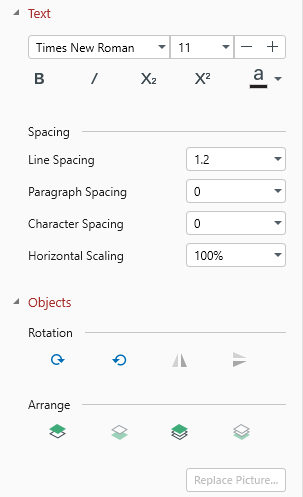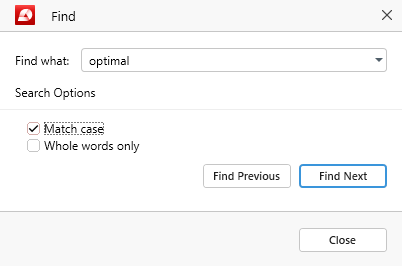In today's competitive job market, your resume isn't just a summary of your work history but rather your personal sales pitch. It's the tool that helps you capture the attention of potential employers and convince them that you're the perfect fit for the position you’re applying for.
But how do you craft a resume that truly sells?
While it might involve a bit of careful planning, listing your experience in CV format – or curriculum vitae meaning “course of (one's) life” in Latin – that is custom-tailored to each job listing is perhaps your best bet. If that sounds too daunting, don’t worry – we’ll walk you through the steps.
It all starts with…
Step 1: Do your homework
A well-researched resume is a powerful tool. It shows employers you've put thought and effort into understanding their needs – and that you're serious about fulfilling them.
So, before you take out your keyboard (or typewriter for all the hipsters out there), your first resume objective is to take some time to understand the industry, the company, and the role you're applying for.
Start by reading the job description thoroughly in order to:
- See exactly what employers are looking for
- Determine which skills to put on your resume
- Jot down any specific language or buzzwords they use
This will help you understand what their ideal candidate looks like.
Revolutionize your PDF workflow. Get a flexible PDF reader & editor for Windows, Android, and iOS.
Next, research the company. Get to know their website, social media channels, and any recent news articles. Understand their culture, mission, products, and services – anything you can learn to show your employer that you’re appreciative of their company culture.
Lastly, understand the trends and demands of the industry. Ask questions like:
- Are there certain skills or qualifications that are highly sought after?
- Are there specific tools or software commonly used in your field?
Step 2: Find the right tool for the job
Now that you've done some research, it's time to start building your resume from the ground up. Trouble is, most of the CV templates you’ll find online are in PDF format and you can’t really edit PDFs on the spot without dedicated software. And while you will find no shortage of free web tools that claim to do just that, the results will likely be questionable at best or your Reddit resume (sure, why not?) might end up being stolen at worst.
Luckily PDF Extra features an offline mode, so you won’t have to worry about any of that stuff while working on your document. The app also runs on Windows, Android, and iOS and allows you to effortlessly edit texts, change fonts, add images, play with spacing options, and even do more advanced things like organizing, compressing, and protecting documents from just about anywhere.

Pictured: PDF Extra’s advanced editing tools panel
Step 3: Channel your inner Hemingway (keep it simple)
Brevity is the soul of wit and that goes double for resumes whose readers are very, very busy people (and even more so if it’s an investment banking resume). Hiring managers typically skim through a CV in just a few seconds – 7 if we are to believe Ladders Inc.’s 2018 findings – so you need to make every word count.
Build your perfect CV with PDF Extra. Get your cross-platform* license today.
*Applicable only to the PDF Extra Ultimate plan.
To that end, here are a few things to keep in mind:
- Aim to keep your resume to one or two PDF pages maximum. This forces you to prioritize the most relevant and impactful information first.
- When writing, use clear, concise language. Avoid jargon and complex sentences. Instead, opt for strong action verbs and quantifiable achievements. For example, instead of saying "was responsible for sales", say "increased sales by 20%".
- Keep visual clutter to a minimum. Break up large blocks of text with bullet points or numbered lists. Use headings and subheadings to guide the reader's eye. Avoid exotic fonts, such as ComicSans, and opt for fonts like Arial or Times New Roman.
TIP: PDF Extra supports all common fonts, so even if your online template features an exotic font, you can easily swap it out on the spot.
Step 4: Share how you want to be contacted
Your contact details should be readily visible, ideally at the top of your resume or in a dedicated section. After all, making it easy for employers to contact you will bring you one step closer to landing that dream interview. Here is what you’ll want to include in your CV:
- Begin with your full name at the top of your resume. This is typically the largest text on the page to draw immediate attention.
- Include your professional email address. Avoid using quirky or informal email addresses – you should ideally use your first and last name.
- Add your phone number. As an extra measure, make sure to also set up a voicemail in case you miss a call.
OPTIONAL: If relevant, you can also include a link to your LinkedIn profile or online portfolio. This gives potential employers an opportunity to learn more about you.
OPTIONAL: Consider your home address. While not always necessary, if the job you're applying for is location-specific, you might want to include it as well.
Step 5: Tailor your CV to the job
One of the most effective ways to make your resume stand out is to tailor it to the specific job you're applying for. This shows employers that you've put thought and effort into your application and that you're genuinely interested in the role.
Craft the perfect CV your way. Start your PDF Extra trial today.
You do this by placing the most relevant skills at the top of the list and the least relevant – at the bottom of the list. Since this is the first section that a recruiter will read, it's important to make it count. Your profile should therefore be brief, but impactful, and should include your professional title, relevant skills, and a brief summary of your experience.
If you were applying for the marketing manager position, for instance, you might prioritize your skills and experience in the following order:
- SEO
- Content creation
- Google Analytics
- Social media management
Step 6: Show, don’t tell
Consider this: according to the job postings platform Zippia, each job opening you see online is flooded with 250+ resumes on average, so if you’re planning on being modest with your achievements, then you’re already setting yourself up for failure.
But instead of shrinking your CV down to a brief list of skills and experiences, aim to demonstrate these through concrete examples and quantifiable results. For instance, instead of saying "excellent communication skills", you could write "presented quarterly reports to a team of 20+ colleagues, resulting in improved project coordination". That alone makes a world of difference, wouldn’t you agree?
Similarly, use numbers and data to back up your achievements as quantifiable results provide tangible evidence of your abilities and make your achievements more compelling. If you helped increase sales, how much was the increase? If you managed a team, how many people were in it? Remember to also include any relevant awards, certifications, or accolades you've received to set yourself apart from other less involved candidates.
Step 7: List your education
Start with your highest level of education. Include the name of the institution, the degree you received, and the dates of attendance. If you graduated with honors or a high GPA, consider including that as well.
If you're still in school, list your expected graduation date instead. You can also include relevant coursework or projects that show your knowledge and skills in action. And for those of you who have attended multiple institutions, it's best to list your accomplishments in reverse chronological order, starting with the most recent.
Learn what PDF Extra can do for you. See our app in action.
Beyond formal education, you can also include any professional development courses, certifications, or workshops you've attended. These can show your commitment to continuous learning and your initiative to acquire new skills.
Step 8: Proofread, proofread, proofread!
First impression is everything and you definitely don’t want something as silly as a few mistyped words to send your CV flying to the trash bin across the room. Save yourself the embarrassment by running your resume through as many spell-checkers as possible or ask some of your grammar nazi friends to view your PDF CV and give you an objective opinion.
Now might also be a good time to add a few power words into the mix to really make your achievements stand out. For instance, instead of writing “I feel like I can thrive under pressure” you can say “I work my best under pressure” and give an example that supports your claim. In case you’re unsure if you’ve already added power words to your CV, PDF Extra has you covered: simply press Ctrl + F within the PDF editing suite to activate the search functionality and look up individual words and phrases in a flash.

Pictured: PDF Extra’s search functionality
Final thoughts
Tailoring your CV might take a little extra time, but it's so worth the effort. A targeted resume not only grabs the attention of hiring managers but also increases your chances of making it past applicant tracking systems. It's a powerful way to show employers that you're not merely a strong candidate, but THE candidate for the job.
Here's a quick recap of all the steps you need to craft an impeccable CV:
- Conduct preliminary research to understand what employers are seeking.
- Opt for suitable PDF software in creating a professional-looking resume.
- Keep your content concise and engaging, avoiding unnecessary fluff.
- Ensure your contact details are accurate and easily visible.
- Customize your CV to align it with the specific job you're applying for.
- Use concrete examples to demonstrate your skills, rather than simply stating them.
- Include your educational qualifications in a clear and structured manner.
- Proofread your CV multiple times to weed out any errors or inconsistencies.
Remember – your resume is your ticket to new and exciting opportunities, so take the time to create a compelling narrative that sells your skills so hard that employers won’t have any other option but to hand you the job on a silver platter.
Until next time and best of luck with your job hunt!